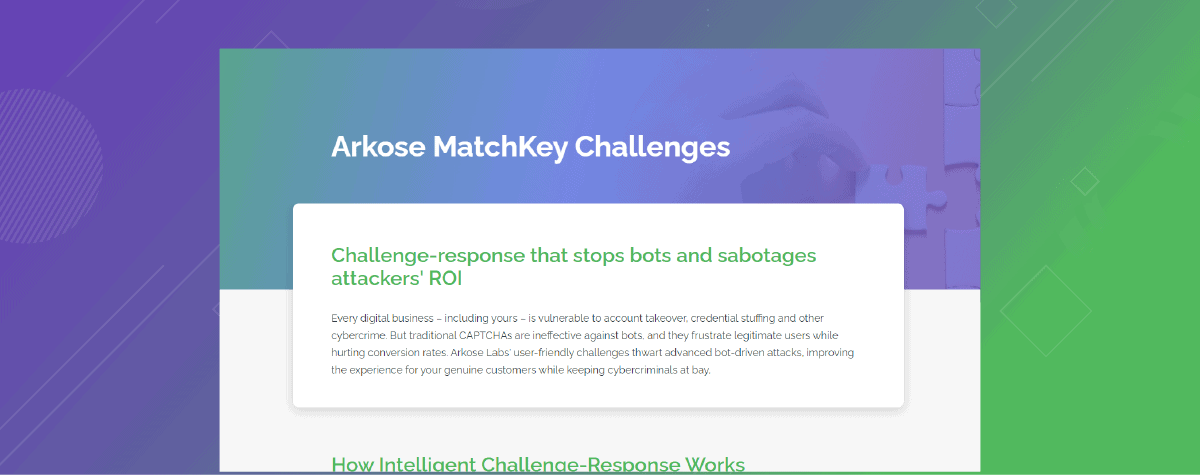There are three main approaches that have traditionally been taken to bot detection and prevention. However, they are flawed against modern, sophisticated automated attacks. While these approaches are usually successful in identifying and stopping these automated attacks, about a third of the world’s total web traffic is made up of malicious bots that have drastically evolved to make bot detection more difficult than ever.
Commonly used solutions cannot fight advanced bots
Some solutions take the approach of blocking any traffic that appears to be suspicious. However, such an approach needs a very high degree of confidence that can accurately identify all bot attacks. As we’ve seen, with today’s bot technology that can mimic human behavior to a fine degree, this is nearly impossible. That means there’s a risk of some good customers turning away, which in turn hurts the bottom line and erodes customer loyalty. And many bots still get through regardless. More and more traffic is falling into a so-called “gray area” whereas only a small amount can appear as either explicitly good or bad. According to Imperva’s “2020 Bad Bot Report”, bad bot traffic has risen to its highest levels ever from 18.1% from the year prior to 24.1% of all website traffic.
Risk scoring traffic compromises bot detection
Traditional risk scoring is now far less effective against modern, sophisticated attacks. For one, this method is very manual, as humans are required to examine scores that aren’t explicitly accepted or rejected for further review. A lack of real-time decisioning means that sophisticated bot attacks often are able to slip through. Additionally, many organizations are dealing with complex tech stacks and receiving many -- often conflicting -- scores from various different systems.
CAPTCHA challenges solved by automated bots
CAPTCHAs and similar tools have long been in place as a way to stop automated attacks. However, most of these struggle against modern innovations in bot technology. All it takes is a quick Google search for any fraudster to find and deploy automated scripts that can bypass these defenses. Furthermore, they also provide undue friction to good customers, who have grown sick and tired of having to spend minutes identifying crosswalks or buses each time they want to log in to an account.
Legacy CAPTCHA solutions are faulty in many ways. While the concept may be noble, in execution many of these legacy solutions have faults.
- Easily solved -- Modern machine vision technology can easily bypass traditional solutions. These advancements in machine vision help develop automated solvers that break through challenges rather easily.
- Too much friction -- These authentication methods also have a low good user pass rate and are an annoyance to customers.
- Human-automation hybrid attacks -- CAPTCHAs are powerless against coordinated attacks that use both bots and human power.
- Lack of insights -- Many of these solutions are inexpensive or free with no managed services. They can’t give businesses insight into attack patterns, nor do they evolve in any way.
How Arkose Labs can be implemented to overcome these limitations
Arkose Labs uses a layered approach to protect APIs from these sophisticated attacks that aim to emulate remote clients and impersonate true users. APIs are constantly targeted by fraudsters, who deploy bots that are designed to appear like legitimate users seeking access to a website.
To learn more about our solutions to these increasing limitations in bot detection, download our Ultimate Guide to Bot Prevention.





